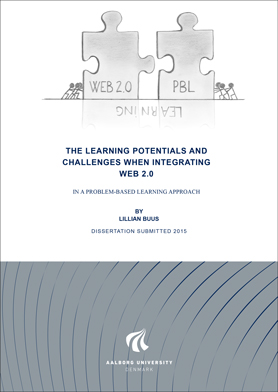The research makes a triple co-construction between problem-based learning (PBL), learning design and action research within the area of networked learning. The complexity this creates in the research can lead it in many different directions, because it builds on collaboration, interaction and “elements” in motion. Lillian Buus' assumption is built on the perspective that knowledge is constructed in social collaborative interactions between people. Furthermore, she claims that the ideology of Web 2.0 provides research opportunities to study phenomena also found in PBL and networked learning such as student-centred (user-generated) content, active participation (creating), interaction, (social) networking, knowledge sharing, and collaborating and cooperating in a social context.
Based on the findings in the research, Lillian Buus' claim has proved to be valid. She presents different learning potentials, which show that this combination of Web 2.0, PBL and networked learning is able to develop and enhance students’ different skills and competences supporting the ideology within the two areas of pedagogy. Besides the learning potentials, she presents challenges or tensions, which can be seen as points of awareness in integrating Web 2.0-mediated learning activities and technology. These can be seen at different organisational levels.
The research furthermore shows that there is a need to organise some kind of organisational support unit to scaffold and facilitate teachers’ design and implement their learning design. And it is important as the “scaffolder” to have competences within the area of pedagogy and technology and keep in mind the philosophy:
“We cannot design learning we can only design for learning”







